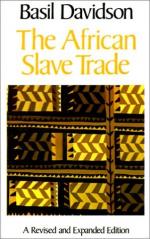|
This section contains 595 words (approx. 2 pages at 300 words per page) |

|
The failure of the Fugitive Slave Act to stem sectional tensions in the 1850s was compounded by two pivotal events toward the decade's end, events that seemed to underscore William Seward's term "irreconcilable conflict" in characterizing the North-South divide over slavery. In 1857 the Supreme Court, under the auspices of Chief Justice Roger Taney, ruled in the Dred Scott decision that the rights of citizenship did not apply to blacks, legalizing the reenslavement of former bondmen and women should they venture back into a slave state. Dred Scott essentially struck down all existing precedents that had sought to establish territorial balance between free and slave states, from the Missouri Compromise of 1821 to the Compromise of 1850, exceeding even the Kansas-Nebraska Act of 1854, which ruled that popular sovereignty should be the primary determinant of whether to allow slavery. The antislavery movement was...
|
This section contains 595 words (approx. 2 pages at 300 words per page) |

|




